Articles
An Irish Culinary Tradition – Edible Seaweeds
September 14, 2008 by Chris
Filed under Articles, Family History, Preserving Your Family Tree, Public Records
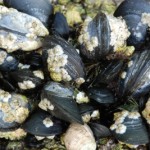 I grabbed this recipe from The Ballycastle Blog: Irish Genealogy and More. Found it so interesting I thought I’d share it with you. The time of the Great Hunger or (The Gotta Mór); Ireland 1845-7, was a bleak time in Irish history. With widespread crop failures and disease that devastated an already weakened people, seaside communities could turn to the sea and thus managed a little better. While men fished, women with their children in-tow hunted the beaches during low tides gathering the numerous varieties of shellfish and seaweeds. A species of seaweed known as Sleabhach which grows from fall to spring on rocks became a staple.
I grabbed this recipe from The Ballycastle Blog: Irish Genealogy and More. Found it so interesting I thought I’d share it with you. The time of the Great Hunger or (The Gotta Mór); Ireland 1845-7, was a bleak time in Irish history. With widespread crop failures and disease that devastated an already weakened people, seaside communities could turn to the sea and thus managed a little better. While men fished, women with their children in-tow hunted the beaches during low tides gathering the numerous varieties of shellfish and seaweeds. A species of seaweed known as Sleabhach which grows from fall to spring on rocks became a staple.
This seaweed is something many of us are familiar with in sushi dishes; you might know it as Nori; today a major Japanese crop worth millions of dollars.
Try out this old Irish recipe’ and impress your Japanese friends.
Sleabhach agus Ruacháin
(Slough-uck a-guss Roo-caw-in)
Nori and Cockles
Ingredients per individual serving
3-4 oz. Nori
15 – 20 Cockles
Butter
Milk.
Cook the Nori in milk for an hour. Cook the cockles in their own juice. If the Nori sheets have not broken up put them in a food-processor for a few moments Serve with a Nori mound in the centre, pour over it a little of the cockle juice and top it with a generous blob of butter. Surround the Nori with the cockles and serve.
I have never seen Nori or the inside of a sushi restaurant, but believe it should work. The original is delicious and cockles go particularly well with “Sleabhach” though other types of shellfish were also used. Perhaps someone who tries the recipe might post his or her culinary review.
See additional Irish family history articles and lessons learned in earlier posts below and in the archives.
This posting is from The Ballycastle Blog: Irish Genealogy and More.
…
Where to Next?
Broaden Your Ancestor’s Name Search
September 11, 2008 by Chris
Filed under Articles, Genealogy and Surnames, Introduction to Genealogy, Lesson 5 Articles, Public Records
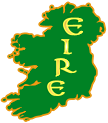 To trace the Irish origins of a client’s Irish grandfather, I recently searched a number of government record databases. The Irish grandfather’s name was Thomas Hogan. Feeling confident in pinpointing the specific person, I entered the first name, Thomas, and the family name (surname), Hogan, in the search fields of the searchable database. My confidence quickly diminished, when, unfortunately, the search results did not produce the one and only Thomas Hogan I was looking for. Being patient and persistent, I took a chance and broadened the search by simply entering the family name (surname), Hogan, in the search field.
To trace the Irish origins of a client’s Irish grandfather, I recently searched a number of government record databases. The Irish grandfather’s name was Thomas Hogan. Feeling confident in pinpointing the specific person, I entered the first name, Thomas, and the family name (surname), Hogan, in the search fields of the searchable database. My confidence quickly diminished, when, unfortunately, the search results did not produce the one and only Thomas Hogan I was looking for. Being patient and persistent, I took a chance and broadened the search by simply entering the family name (surname), Hogan, in the search field.
Although, as you can guess, this wider search produced hundreds of records, I hoped that it might uncover the correct Thomas Hogan.
Eureka! Lo and behold, the “Hogan only” search produced a record for a “Thos. Hogan”, the correct one, the grandfather I was looking for. The lesson learned: before giving up and suspending your search for a specific first name-last name combination, broaden your search to include an abbreviated first name. You may ultimately find the person you are looking for!
Footnote: To quicken the creation of a written form or record, a government official sometimes abbreviated the first name of a person in that form or record. Today, searchable electronic databases contain those same abbreviations.
See more Irish family history articles and lessons learned in earlier posts below and in the archives.
…
Where to Next?
Blank Family Tree with Step-by-Step Instructions
…
Roll of the Honorary Freedom of the City of Dublin (1876-1999)
September 11, 2008 by Chris
Filed under Blank Family Tree, Genealogy Research Resources, Sharing Genealogy Information
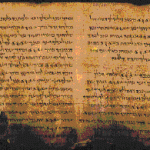
Isaac Butt, Q.C. 4th Sept., 1876 Irish lawyer and Home Rule leader. Right Hon. William Ewart Gladstone, P.C., M.P. 1st Nov., 1877 British Prime Minister and Home Uler crusader.
Ulysses S. Grant, ex-President U.S.A. 30th Dec., 1878 18th President of the U.S.A., on his world tour. Captain Edward E. Potter. 26th April, 1880 Captain of Relief Ship, Constellation, U.S. Navy, sent to relieve famine of 1879-80
Charles Stewart Parnell 3rd Jan., 1882 Irish nationalist leader.
John Dillon, M.P. 3rd Jan., 1882 Irish nationalist politician.
Kevin Izod O’Doherty 10th Aug., 1885
Hon. Patrick A. Collins, Senator, U.S.A. 22nd July, 1887
William O’Brien, M.P. 22nd July, 1887 Irish political leader
Timothy Daniel Sullivan, M.P. 10th Dec., 1887
Thomas Sexton, M.P. 28th Dec., 1887
The Rt. Hon. the Marquis of Ripon, P.C. 16th Jan., 1888 English politician
The Rt. Hon. John Morley, P.C., M.P. 16th Jan., 1888 British author and politician. Chief Secretary of Ireland (1886).
Continue reading “Roll of the Honorary Freedom of the City of Dublin (1876-1999)” »
Eneclann to research Irish Battlefields
September 11, 2008 by Chris
Filed under Articles, Blank Family Tree, Latest News
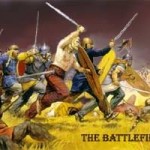 Eneclann has been awarded a contract by the Irish Government (OPW) to carry out historical research into key Irish Battles and Battlefields. Eneclann is part of a consortium that includes the consultancy Headland Archeology Ltd. The project is being undertaken against the backdrop of a growing awareness of, and interest in, battlefield sites not just in Ireland but worldwide. Battlefields have not to date been researched in any great depth in Ireland. There is a need to provide information and to promote the conservation and interpretation of these sites. There are also significant educational and amenity aspects to this project.
Eneclann has been awarded a contract by the Irish Government (OPW) to carry out historical research into key Irish Battles and Battlefields. Eneclann is part of a consortium that includes the consultancy Headland Archeology Ltd. The project is being undertaken against the backdrop of a growing awareness of, and interest in, battlefield sites not just in Ireland but worldwide. Battlefields have not to date been researched in any great depth in Ireland. There is a need to provide information and to promote the conservation and interpretation of these sites. There are also significant educational and amenity aspects to this project.
For further details see the full press release from the OPW or find more Eneclann news.
…
Where to Next?
…
Who Do You Think You Are ? Australia
September 11, 2008 by Chris
Filed under Articles, Blank Family Tree, Latest News
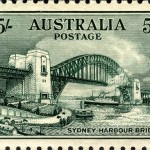 Our friends at Who Do You Think You Are ? Australia have told us that due to record ratings and popular demand, the recent run of the Australian Who Do You Think You Are? series is going straight back on air as a repeat, starting this Friday 22nd February at on SBS TV. In addition to this the station is continuing to show various episodes of the UK series. Episode 1 on Jack Thompson was the highest rating Australian production ever on SBS TV. Eneclann researched Jack’s convict Irish Ancestor, Patrick Byrnes, for this episode.
Our friends at Who Do You Think You Are ? Australia have told us that due to record ratings and popular demand, the recent run of the Australian Who Do You Think You Are? series is going straight back on air as a repeat, starting this Friday 22nd February at on SBS TV. In addition to this the station is continuing to show various episodes of the UK series. Episode 1 on Jack Thompson was the highest rating Australian production ever on SBS TV. Eneclann researched Jack’s convict Irish Ancestor, Patrick Byrnes, for this episode.
You can link to the show’s web site at WDYTYAA
…
Where to Next?
…
Facebook for the Dead?
September 11, 2008 by Chris
Filed under Articles, Cemetery Searches, Genealogy Cemetery Searches, Genealogy Records 101
A press release from 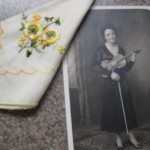 explains how, and why, Footnote.com takes social networking into the past. When a loved one is lost, friends and family members experience a range of emotions from sorrow and grief to comfort. Often, this leads to sharing stories and memories. Until now, it has been a challenge to find a place where these stories can come together to easily be shared, preserved and enriched. At Footnote.com, anyone can create or find Footnote Pages, a space where users can connect and share information, photos and stories about people important to them.
explains how, and why, Footnote.com takes social networking into the past. When a loved one is lost, friends and family members experience a range of emotions from sorrow and grief to comfort. Often, this leads to sharing stories and memories. Until now, it has been a challenge to find a place where these stories can come together to easily be shared, preserved and enriched. At Footnote.com, anyone can create or find Footnote Pages, a space where users can connect and share information, photos and stories about people important to them.
To celebrate the new Footnote Pages, Footnote.com created over 80 million pages from the data in the SSDI. These pages feature an interactive timeline, map, photo gallery, and many other tools which has led some to refer to Footnote Pages as the Facebook for the Deceased.
Read the full press release at the Footnote Press Room, or visit the Footnote Blog.
…
Where to Next?
…
The Handloom Weavers of Perth website
September 11, 2008 by Chris
Filed under Blank Family Tree, Genealogy Occupational Records, Genealogy Records 101
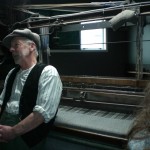 Genealogy is an ever fascinating subject and you may be surprised at just how many research approaches are available to you. We are all informed about the primary concepts of – start with you and hunt the down those birth, marriage and death records. Very soon after that, avid researchers are busily tracking down the most likely census returns. However, were you aware that you may be missing out on another incredibly valuable but often overlooked resource in researching your ancestor’s; researching their trade?
Genealogy is an ever fascinating subject and you may be surprised at just how many research approaches are available to you. We are all informed about the primary concepts of – start with you and hunt the down those birth, marriage and death records. Very soon after that, avid researchers are busily tracking down the most likely census returns. However, were you aware that you may be missing out on another incredibly valuable but often overlooked resource in researching your ancestor’s; researching their trade?
On many of the above mentioned records you will likely find the profession or trade of your past generations listed along with all of the vital statistics data. From this point on you can begin your journey down an amazing path of discovery, which will not only provide you with more factual information but more importantly bring you closer to knowing exactly who your ancestors were as individuals.
In this wonderful article on “The Handloom Weavers of Perth” from Scotland’s Greatest Story you will get a glimpse of the significance of this type of research and the value it provides not only to your genealogy research but to your family history as well.
After reading this, if you are still thirsty for more information on the subject, follow this link to the The Handloom Weavers of Perth web site.
I hope you enjoy this as much as I did.
The website is available at www.perthweavers.bravehost.com and will be extended further next year, once I get a chance to continue it!
Hopefully it might be of use to some of those with Perth ancestry!
Chris
www.ScotlandsGreatestStory.co.uk
Scotland’s Greatest Story
Professional family history research & genealogical problem solving
…
Where to Next?
…
Searching Cemeteries – Genealogy Tip
September 7, 2008 by Chris
Filed under Articles, Cemetery Searches, Genealogy Cemetery Searches, Genealogy Records 101
 Here is a s quick genealogy tip for searching cemeteries. Sometimes the obvious isn’t all that apparent. Remember that in past centuries, almost all people were buried according to ethnic origin or religious affiliation.
Here is a s quick genealogy tip for searching cemeteries. Sometimes the obvious isn’t all that apparent. Remember that in past centuries, almost all people were buried according to ethnic origin or religious affiliation.
So, the tip is: don’t waste your time looking in a Presbyterian cemetery for a Catholic ancestor. Sounds obvious now that I’ve said it, but it is such an easy (and frustrating) mistake to make.
Take care.
…
Where to Next?
…
London Historical Records To Go Online
September 5, 2008 by Chris
Filed under Articles, Latest News, Public Records
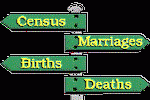 Just received this notice of this from Geneanet. The London Metropolitan Archive and Guildhall Library Manuscripts date from the early 16th Century to 2006. These records, owned by the City of London, include parish records, school records, electoral registers, lists of workhouse laborers and wills. The expected launch date is early 2009 and will comprise the baptismal, marriage and burial records from more that 10,000 parish registers of Greater London. In addition London school admissions from 843 schools, dating from the early Victorian times to 1911, will also be made available.
Just received this notice of this from Geneanet. The London Metropolitan Archive and Guildhall Library Manuscripts date from the early 16th Century to 2006. These records, owned by the City of London, include parish records, school records, electoral registers, lists of workhouse laborers and wills. The expected launch date is early 2009 and will comprise the baptismal, marriage and burial records from more that 10,000 parish registers of Greater London. In addition London school admissions from 843 schools, dating from the early Victorian times to 1911, will also be made available.
This effort is being made on the hope that they will aid individuals in tracing the origins of ancestors who at some point either passed through or lived in London.
…
Where to Next?
…
Medieval England – Soldier Database
June 1, 2008 by Chris
Filed under Genealogy Research Resources, Public Records, Sharing Genealogy Information
 This came through on the Genealogy Blog at GeneaNet today. It appears as if a research grant (from the Arts and Humanities Research Council) for around a half-million pounds was awarded to a couple academics in England. the overall idea is that they’ll use the money to challenge some assumptions about the emergence of professional soldiery in the 14th and 15th century.
This came through on the Genealogy Blog at GeneaNet today. It appears as if a research grant (from the Arts and Humanities Research Council) for around a half-million pounds was awarded to a couple academics in England. the overall idea is that they’ll use the money to challenge some assumptions about the emergence of professional soldiery in the 14th and 15th century.
The genealogy interest…?
“The project has an innovative methodological approach and will be producing an on-line search-able resource for public use of immense value and interest to genealogists as well as social, political and military historians. The project employs two Research Assistants over three years and also includes one Doctoral Research Studentship – all of whom began work on 1st October 2006. The whole team is working on a jointly authored book, conference papers, and articles.”
You can read the full article and get access to the pilot database at GeneaNet’s Blog posting on the matter.
…
…
Where to Next?
Blank Family Tree with Step-by-Step Instructions
…
